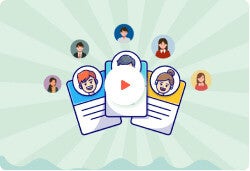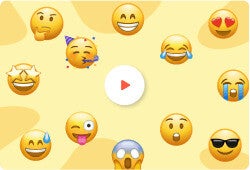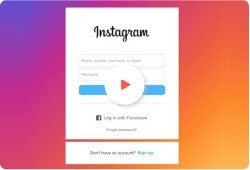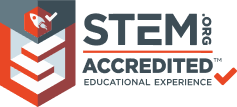
Learn HTML with Top AI & Coding Course Instructors for Kids and Teens
Empower your child to move from consuming content to creating it. Codingal’s website development course teaches HTML to kids and teens the building blocks of the web, enabling them to design and structure their own websites. With guidance from expert instructors, students will embark on a journey that combines creativity with foundational coding skills, setting the stage for future exploration in AI & coding.
5 Modules, 36 Lessons, 40+ Activities & Projects, 36 Quizzes
Students
Countries
4.6 / 5 stars
This course includes:
Personalized 1-on-1 or group online AI courses for kids
Live instruction from expert Computer Science teachers
Hands-on AI for kids learning integrated into the curriculum
40+ interactive activities and projects to explore artificial intelligence for kids
STEM.org accredited AI & ML certificates for kids
Lifetime access to course content for self-paced learning
Unlimited 1:1 live doubt sessions with instructors
Monthly progress reports to track your child’s growth
What is HTML for kids?
HTML stands for HyperText Markup Language. It's the foundational language for creating web pages. You can think of it as the structure of a house - the walls, rooms, and foundation. This is super important for anyone learning HTML for kids. HTML tells the web browser what content to display and where to place it. Without HTML, websites wouldn't exist!
Engaging Website Development classes for kids

What you will learn
Understanding the structure of web pages
Utilizing HTML tags to create headings, paragraphs, and lists
Embedding images and videos
Introduction to forms and tables
Basics of structuring content for the web
Confidence to explore more complex coding languages and AI tools

Skills you will gain
Web page structuring and design
Utilizing core HTML tags effectively
Embedding media content (images, videos, audio)
Creating links, lists, tables, and forms
Attention to detail in writing clean, structured code
Building and showcasing personal web pages
Our HTML Class Curriculum
The HTML curriculum is designed to take students from foundational concepts to practical web development skills. Beginning with setting up development tools and writing basic HTML, students gradually learn to use headings, paragraphs, lists, links, tables, media, semantic tags, and forms. Each lesson builds on the previous one, enabling students to create structured, interactive web pages and apply their learning in hands-on, real-world projects - it‘s like building with digital LEGOs!
Fun trial class activities and lessons for kids to learn HTML
Learning HTML with Codingal is far from monotonous - it's a blast! We incorporate interactive activities, quizzes, and projects that make the learning experience super enjoyable. Students get to design their own web pages, create digital stories, and even build simple games, all while understanding the underlying HTML structures. Get ready for some serious fun!

Student Profile Card
Design a personalized digital profile card that showcases your interests, dream job, and fun facts—styled your way with colors, photos, and more.

Emoji Board
Create an interactive webpage that displays emojis representing moods, allowing users to explore their feelings with visual feedback.

Instagram Login Page Clone
Create a fun Instagram login page using HTML and CSS, learning to add forms, buttons, and links!
Learn from experienced teachers. Our hand-picked AI & coding tutors ensure the best learning experience

Our instructors bring deep expertise in Computer Science and complete rigorous training before they teach. They’re truly amazing, and it shows in our exceptional Net Promoter Score (NPS) of 86! Students and parents consistently rate our teachers 4.9 out of 5, and our curriculum earns a fantastic 4.8 out of 5. We’re so proud to have a faculty that’s 91% female and 9% male, creating an inclusive, encouraging learning environment where everyone feels welcome. Each tutor is trained to understand individual student needs and deliver personalized support, even in group settings. Plus, students have 24/7 access to expert tutors for instant doubt resolution, anytime they need help. This makes learning HTML a truly supported experience, especially through our virtual HTML lessons that connect kids with top educators worldwide.

🎓 500+
Computer Science instructors👨💻 7+
Years coding experience👩 91%
Female teachers💻 10+
Coding languagesThe best place for kids to learn the basics and fundamentals of Website Development
Codingal offers a nurturing environment where young learners can explore the world of coding without fear. Our structured curriculum, combined with supportive instructors, ensures that students build a strong foundation in HTML, preparing them for exciting future endeavors in AI & coding.
Hands-on experience with industry tools
Exciting HTML projects
Interactive and progressive learning
Flexibility and accessibility
Focus on creativity and problem-solving
STEM.org accredited educational experience and certificates

At Codingal, your child masters HTML through a STEM.org - accredited program built on proven educational frameworks like Bloom’s Taxonomy, BIDE, and STEAM. Our curriculum is aligned with Common Core, state standards, AP Computer Science goals, and the K - 12 Computer Science Framework - ensuring learning that’s both age-appropriate and college-ready. Through hands-on, project-based learning, students create real-world apps like temperature converters and scientific calculators, applying math, science, and engineering logic to solve everyday problems. Backed by STEM.org’s rigorous audits, every HTML lesson lays a strong, future-proof foundation in STEM.
Unlock your skills and earn your HTML certifications

In the Website Development track, students in grades 6 - 12 begin their journey with HTML, the foundational language of the web. They learn how to structure web pages using elements like headings, paragraphs, links, images, lists, tables, and forms. As they progress, students apply semantic HTML to improve accessibility and build pages that mirror real-world websites. Through hands-on lessons and creative projects, they transform code into fully functional web pages. By the end of the HTML module, students not only understand how websites are built but also develop a strong foundation for diving into web design, interactivity with JavaScript, and more advanced web technologies.
Our HTML classes are appropriate for middle school & high school students
At Codingal, our foundational HTML & CSS curriculum introduces middle and high school students to the foundational language of the web. Starting with simple elements like headings, paragraphs, and links, students engage in beginner-friendly activities that teach them how to structure content and create web pages. As they progress, they explore more advanced concepts such as tables, forms, and semantic elements - ensuring a clear, steady learning curve. With each project, students build real-world webpages, strengthen their understanding of web development, and gain the confidence to advance into styling and interactive web designs with HTML & CSS.

What students and parents have to say about our training program
Codingal is backed by esteemed angel investors
Codingal has secured substantial backing from renowned investment firms and a host of prominent angel investors.






More recommended courses for you

Website Development: Build AI-Powered Websites
Learning outcomes
Build stunning, responsive websites
Create interactive web pages
Master HTML, CSS, and JavaScript
Implement best practices in website development


AI & Coding Grandmaster: Master Coding Skills
Learning outcomes
Build apps, games, and websites
Master AI and coding skills
Engage in project-based learning
Earn an AI & Coding Grandmaster certificate, accredited by STEM.org
About HTML
Why Should Kids Learn HTML?
Learning HTML is a great way for kids to:
- Boost creativity by designing their own websites
- Learn problem-solving skills by figuring out how to structure and style a page
- Understand the basics of web development, which is essential for future coding careers
- Express themselves by building their own web projects
- HTML gives kids a strong foundation for learning other coding languages like CSS and JavaScript.
How Do You Explain HTML to a Child?
Imagine you’re building a house. HTML is like the foundation, walls, and roof; it gives your website structure.CSS is like the paint and furniture that make the house look nice. Explaining it this way makes it easy for kids to grasp the basics of HTML.
What Does HTML Stand For?
HTML stands for HyperText Markup Language. It‘s the foundational language for creating web pages. You can think of it as the structure of a house—the walls, rooms, and foundation. This is fundamental for anyone learning HTML for kids.
An Easy Way to Understand HTML for kids
Here’s a simple analogy to help you understand HTML. Imagine you are drawing a superhero. The first step is to sketch the basic outline of the character (the head, body, arms, and legs). That simple sketch is your HTML. It provides the essential structure, but it’s plain. It’s what gives the character personality and makes them look unique and powerful. This is exactly how kids learn HTML in our kids HTML classes; making their ideas come to life!
What Kids Learn with HTML?
When kids learn HTML, they are learning how to be digital architects. It gives them a strong sense of structure and organization. For those learning HTML for kids, understanding these principles is crucial. They discover how to organize content, add images and videos, create links, and even build forms for interactivity. HTML makes visual coding for kids exciting, turning their work into digital blueprints for the web.
Here are a few things they can do with HTML:
- Structure Content: Kids can organize text with headings, paragraphs, and lists - just like organizing their thoughts!
- Add Media: They can embed images, videos, and audio into their web pages - making them super engaging!
- Create Links: They can connect different pages or external websites; building their very own web of information!
- Build Forms: They can create interactive elements like contact forms or surveys - making their websites useful and fun!
Frequently Asked Questions
HTML (HyperText Markup Language) is the standard language for creating web pages. It‘s like the skeleton of a website, providing the structure and content. Think of it as the blueprint for your digital creations!
Learning HTML helps children understand how websites are built, fosters logical thinking, and encourages creativity. It‘s a fundamental skill for anyone interested in web design, game development, or even just making their own cool online projects.
Not at all! HTML is very beginner-friendly. It uses simple tags that are easy to understand, and you can see your changes instantly in a web browser. Our courses make it fun and engaging for all ages.
With HTML, your child can create personal web pages, online stories, digital photo albums, simple games, and much more! It‘s the first step to becoming a web developer.
HTML (HyperText Markup Language) is the standard language used to create web pages. Our course introduces kids to HTML in a fun and interactive manner.
Through our structured curriculum, live classes, and hands-on projects, kids learn HTML by building real web pages from scratch.
Yes, Codingal offers online HTML classes with live instructors, ensuring personalized guidance and interactive learning.
Not at all! HTML is highly beginner-friendly and is a perfect first step for kids starting their coding journey.
With HTML, kids can create and structure their own web pages, laying the foundation for learning web design, JavaScript, and full web development.
Yes, students who complete the HTML curriculum receive a Codingal HTML Developer Certificate to recognize their achievement and skills.



